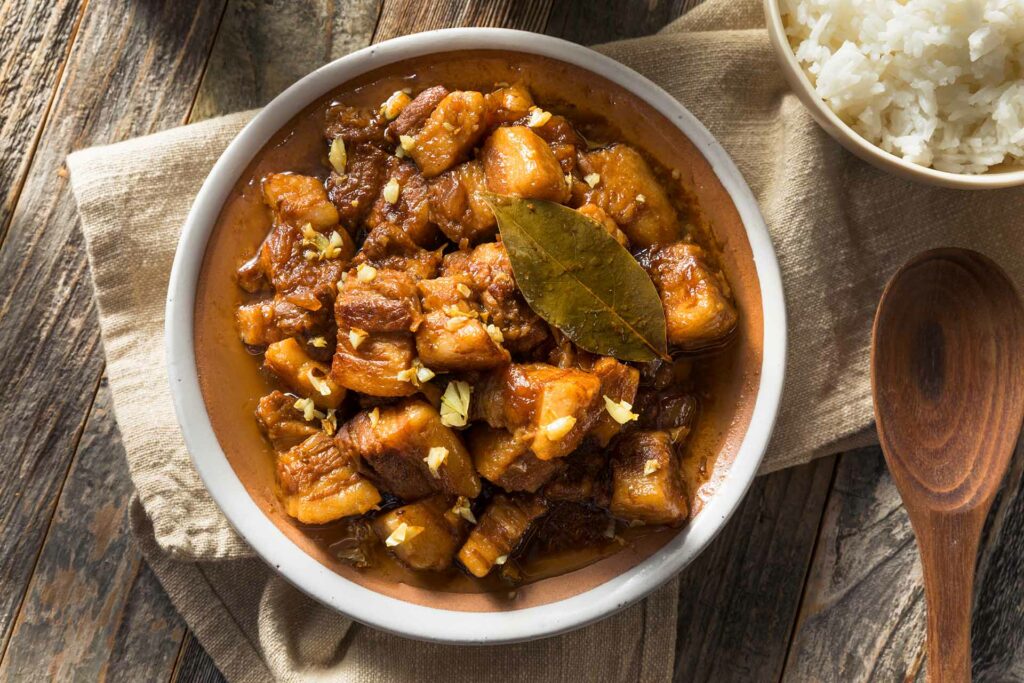Are you a culinary enthusiast looking to elevate your dishes with the unique flavors of kaffir lime leaves? Perhaps you’ve come across a mouthwatering recipe that calls for these aromatic leaves, but you’re unable to find them in your local market. Don’t worry, we’ve got you covered! In this comprehensive guide, we will delve into the fascinating world of kaffir lime leaves substitutes, allowing you to unlock new dimensions of taste in your cooking.
The Quest for Substitutes
Kaffir lime leaves are undoubtedly a prized ingredient, but their availability can be limited in certain regions. Moreover, some individuals may have difficulty sourcing them due to various reasons, such as personal preferences or dietary restrictions. Fear not, for we are here to help you navigate this challenge and find suitable alternatives that can mimic the essence of kaffir lime leaves.
Exploring Factors to Consider
When seeking a substitute for kaffir lime leaves, several factors come into play. Firstly, the availability and accessibility of kaffir lime leaves in your area will determine the ease with which you can procure them. Secondly, understanding the flavor profile and aromatic qualities of kaffir lime leaves will enable you to identify substitutes that can closely replicate their essence. Lastly, the versatility and compatibility of the substitutes in different dishes will ensure a seamless integration into your culinary creations.
Understanding Kaffir Lime Leaves
Kaffir lime leaves, also known as makrut lime leaves, are an integral ingredient in Southeast Asian cuisine. These vibrant, dark green leaves are derived from the kaffir lime tree, scientifically known as Citrus hystrix. Native to countries like Thailand, Indonesia, and Malaysia, kaffir lime leaves have been cherished for centuries for their distinctive flavor and aroma.
The flavor profile of kaffir lime leaves can be described as a combination of citrusy and floral notes. They exude a strong, tangy fragrance with hints of lemon and lime, accompanied by an earthy undertone. It is this unique blend of flavors that makes kaffir lime leaves a standout ingredient in numerous dishes, particularly in Thai and Indonesian cuisine.
In traditional cooking, kaffir lime leaves are used both in their fresh and dried forms. The fresh leaves are highly prized for their intense aroma and vibrant taste, while dried leaves are a convenient alternative when fresh ones are not readily available. The leaves are typically used whole, but their tough texture makes them unsuitable for consumption. Instead, they are added to dishes during the cooking process to infuse their flavors into the dish.
Kaffir lime leaves have a wide range of culinary applications. They are commonly used in soups, curries, stir-fries, and marinades, where they impart a refreshing and tangy kick. The leaves can also be finely sliced and added to salads, rice dishes, and even desserts for an added layer of complexity. Their versatility in both savory and sweet preparations makes them a cherished ingredient in various cuisines.
Apart from their culinary uses, kaffir lime leaves also hold cultural significance. In certain Southeast Asian traditions, these leaves are believed to possess medicinal properties and are used in herbal remedies for various ailments. The leaves are also used in religious ceremonies and as offerings in temples, symbolizing purity and auspiciousness.
However, despite their popularity and unique flavor, kaffir lime leaves may not be easily accessible to everyone. In some parts of the world, finding fresh or dried kaffir lime leaves can be a challenge. This is where the need for suitable substitutes arises, allowing individuals to recreate the distinctive taste of kaffir lime leaves in their dishes even when the original ingredient is unavailable.
Factors to Consider When Choosing Substitutes
When it comes to finding suitable substitutes for kaffir lime leaves, several factors should be considered to ensure a successful culinary substitution. These factors play a crucial role in determining the effectiveness of the substitute and how well it can replicate the flavors and aromas of kaffir lime leaves. Let’s explore these factors in detail:
Availability and Accessibility
The first consideration is the availability and accessibility of kaffir lime leaves in your area. Depending on your location, it may be challenging to find fresh or dried kaffir lime leaves in local markets or grocery stores. In such cases, having readily available substitutes becomes essential to continue enjoying the flavors associated with kaffir lime leaves. Opting for substitutes that are more accessible in your region ensures that you can easily incorporate them into your cooking without compromising on taste.
Flavor Profile and Aromatic Qualities
To choose an appropriate substitute, understanding the flavor profile and aromatic qualities of kaffir lime leaves is crucial. Kaffir lime leaves contribute a distinct citrusy and floral flavor to dishes, with a tangy and refreshing aroma. When selecting a substitute, look for ingredients that can replicate or complement these flavor characteristics. Consider the substitute’s taste, fragrance, and how closely it resembles the unique qualities of kaffir lime leaves. This will help ensure that the substitute can provide a similar taste experience in your dishes.
Culinary Compatibility and Versatility
Another important factor to consider is the culinary compatibility and versatility of the substitute. Different substitutes may have varying strengths and weaknesses when it comes to their use in specific dishes or cuisines. Some substitutes may work better in certain types of recipes, while others may be more versatile and suitable for a wide range of culinary creations. Evaluating the compatibility and versatility of the substitute will allow you to make informed decisions about which alternative to choose based on your cooking preferences and the specific dish you’re preparing.
By carefully considering these factors, you can select a suitable substitute that aligns with your culinary needs and preferences. Whether you’re looking for a readily available option, aiming to replicate the flavor profile of kaffir lime leaves, or seeking versatile substitutes, taking these factors into account will help you make the best choice and ensure a delightful dining experience. So let’s explore some of the most popular kaffir lime leaves substitutes and discover their unique qualities and culinary applications.
Kaffir Lime Leaves Substitutes
When it comes to finding suitable substitutes for kaffir lime leaves, there are several alternatives that can closely mimic their flavors and aromas. These substitutes offer a range of options to experiment with and enhance your culinary creations. Let’s explore some of the most popular kaffir lime leaves substitutes:
Lemongrass: A Tangy Twist
Lemongrass, with its vibrant citrusy flavor and aroma, is often considered a top choice when seeking a substitute for kaffir lime leaves. It possesses a tangy and refreshing profile that can add a similar zesty twist to your dishes. To use lemongrass as a substitute, you can either chop it finely or crush it to release its essential oils. Lemongrass is particularly well-suited for Thai, Vietnamese, and Indonesian cuisines, where it can be used in soups, curries, stir-fries, and more.
Lime Zest: A Burst of Citrus
Lime zest, the outermost layer of the lime peel, is another excellent alternative for kaffir lime leaves. It offers a vibrant burst of citrus flavor that closely resembles the tangy notes of kaffir lime leaves. To use lime zest as a substitute, simply grate the outer layer of a lime using a fine grater or zester. The zest can be added to various dishes, including curries, marinades, dressings, and desserts, to infuse them with a delightful citrusy kick.
Makrut Lime Essential Oil: Concentrated Essence
For a more intense and concentrated substitute, makrut lime essential oil can be a valuable addition to your culinary repertoire. This essential oil captures the essence of kaffir lime leaves in a potent form. A little goes a long way with this substitute, as a small amount can deliver a powerful burst of flavor. It is important to use makrut lime essential oil sparingly to avoid overpowering your dishes. This substitute works well in Thai curries, soups, and sauces, providing a strong and authentic kaffir lime flavor.
Lime Leaves Paste: Convenience at Your Fingertips
For those seeking convenience without compromising on taste, lime leaves paste offers a viable substitute for kaffir lime leaves. This paste is made from ground or pureed lime leaves, providing a concentrated form of their flavors. Lime leaves paste can be easily incorporated into various dishes, such as curries, soups, and stir-fries, to infuse them with the citrusy and aromatic qualities of kaffir lime leaves. It is a convenient option for individuals who may not have access to fresh or dried leaves.
Lime Juice and Bay Leaf Mixture: A Flavorful Fusion
Combining lime juice with bay leaf can create an interesting and flavorful substitute for kaffir lime leaves. The tanginess of lime juice complements the herbal and slightly floral notes of bay leaf, resulting in a fusion of flavors reminiscent of kaffir lime leaves. To create this substitute, mix freshly squeezed lime juice with crushed bay leaves and allow the mixture to infuse for a short period. This flavorful blend can be used in a variety of dishes, including soups, stews, and marinades, adding a unique twist to your culinary creations.
By exploring these kaffir lime leaves substitutes, you can continue to enjoy the vibrant flavors and aromas that they bring to your dishes, even when the original ingredient is not readily available. Each substitute offers its own unique characteristics, allowing you to experiment, adapt, and create exciting flavor combinations in your culinary adventures. So, let’s dive into the world of these substitutes and unlock new dimensions of taste in your cooking!





